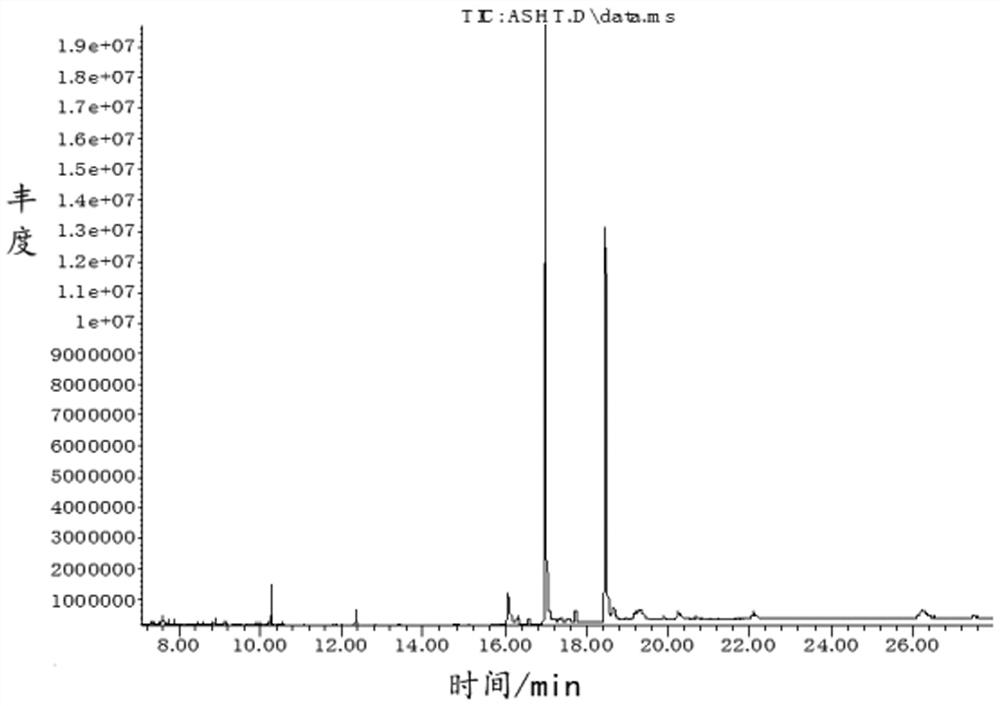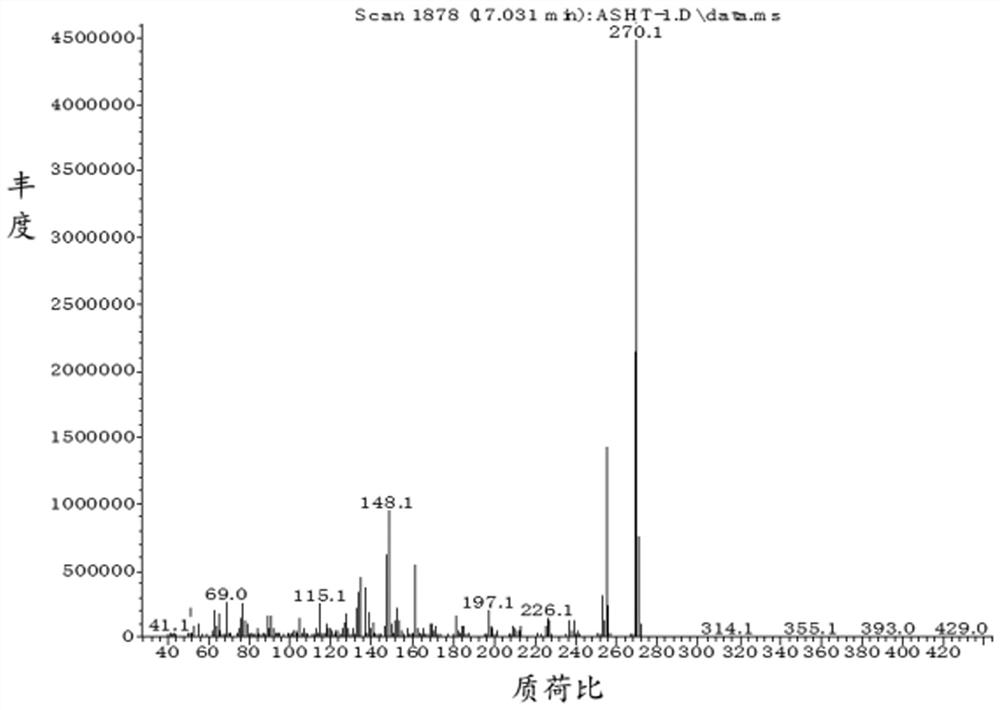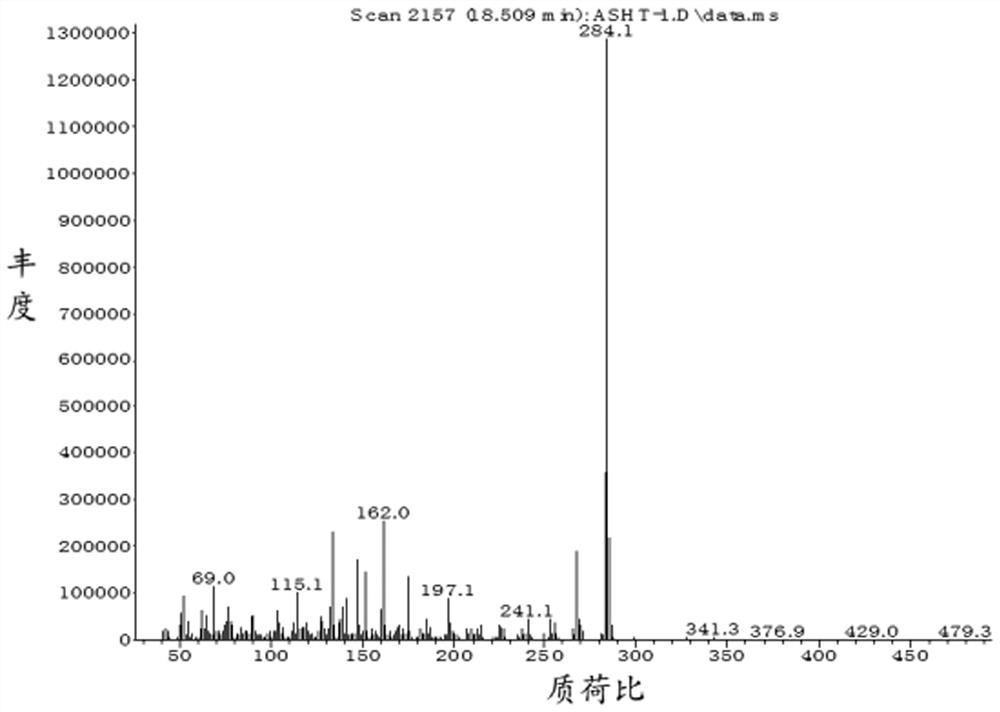Method for identifying Dalbergia odorifera and Dalbergia retusa
A technology of austenitic yellow and Dalbergia, which is applied in the field of wood detection, can solve the problems of wood rays, intrusions, and auxiliary parenchyma that are similar or difficult to distinguish, and achieve the effect of scientific and easy implementation and maintenance of market order
- Summary
- Abstract
- Description
- Claims
- Application Information
AI Technical Summary
Problems solved by technology
Method used
Image
Examples
Embodiment 1
[0029] (1) Take a sample to be tested, clean the surface of the sample, use a knife to scrape the heartwood into thin slices, the thickness of each thin slice is not more than 1mm, and the weight is about 0.005 ~ 0.015g. Accurately weigh 5 samples, each 0.25 g; (2) respectively immerse each sample in 5ml of dichloromethane solvent, and put it into an ultrasonic wave for extraction for 60min, and the extraction temperature is 20°C; (3) respectively adopt 0.45 micron organic microporous filter to filter to obtain 5 parts of extracts, the extracts are all orange-red; (4) respectively adopt gas chromatography-mass spectrometry to analyze the extracts, wherein, the test conditions of gas chromatography are as follows: the chromatographic column is Agilent DB-5MS [30m × 0.25mm ×0.1μm]; carrier gas: helium; carrier gas flow rate: 1mL / min; column temperature: using programmed temperature rise, the initial temperature is 80°C and kept for 0.5min, then programmed at a rate of 20.0°C / min ...
Embodiment 2
[0034] (1) Take a sample to be tested, clean the surface of the sample, use a knife to scrape the heartwood into thin slices, the thickness of each thin slice is not more than 1mm, and the weight is about 0.005 ~ 0.015g. Accurately weigh 3 samples, each 0.30 g; (2) respectively immerse each sample in 10ml of dichloromethane solvent, and put it into an ultrasonic wave to extract for 60min, and the extraction temperature is 15°C; (3) respectively adopt 0.45 micron organic microporous filter to filter to obtain 3 parts of extracts, the extracts are all orange-red; (4) respectively adopt gas chromatography-mass spectrometry to analyze the extracts, wherein, the test conditions of gas chromatography are as follows: the chromatographic column is Agilent DB-5MS [30m × 0.25mm ×0.1μm]; carrier gas: helium; carrier gas flow rate: 1mL / min; column temperature: using programmed temperature rise, the initial temperature is 80°C and kept for 0.5min, then programmed at a rate of 20.0°C / min to ...
PUM
| Property | Measurement | Unit |
|---|---|---|
| Thickness | aaaaa | aaaaa |
| Aperture | aaaaa | aaaaa |
| Length | aaaaa | aaaaa |
Abstract
Description
Claims
Application Information
 Login to View More
Login to View More - R&D
- Intellectual Property
- Life Sciences
- Materials
- Tech Scout
- Unparalleled Data Quality
- Higher Quality Content
- 60% Fewer Hallucinations
Browse by: Latest US Patents, China's latest patents, Technical Efficacy Thesaurus, Application Domain, Technology Topic, Popular Technical Reports.
© 2025 PatSnap. All rights reserved.Legal|Privacy policy|Modern Slavery Act Transparency Statement|Sitemap|About US| Contact US: help@patsnap.com



